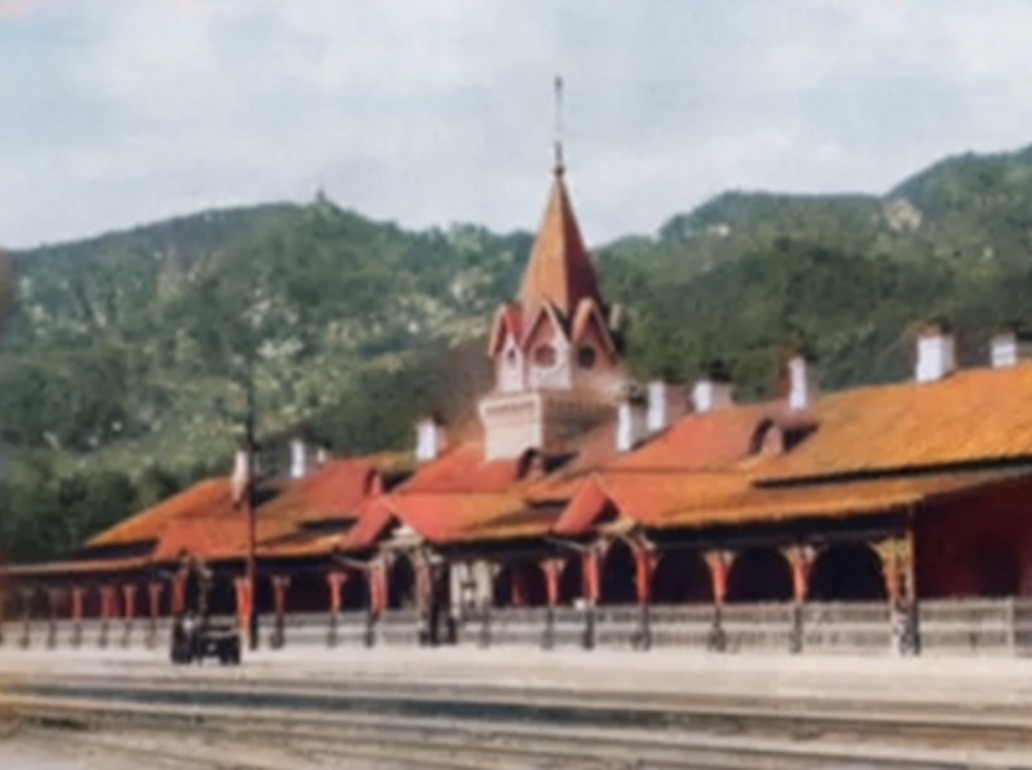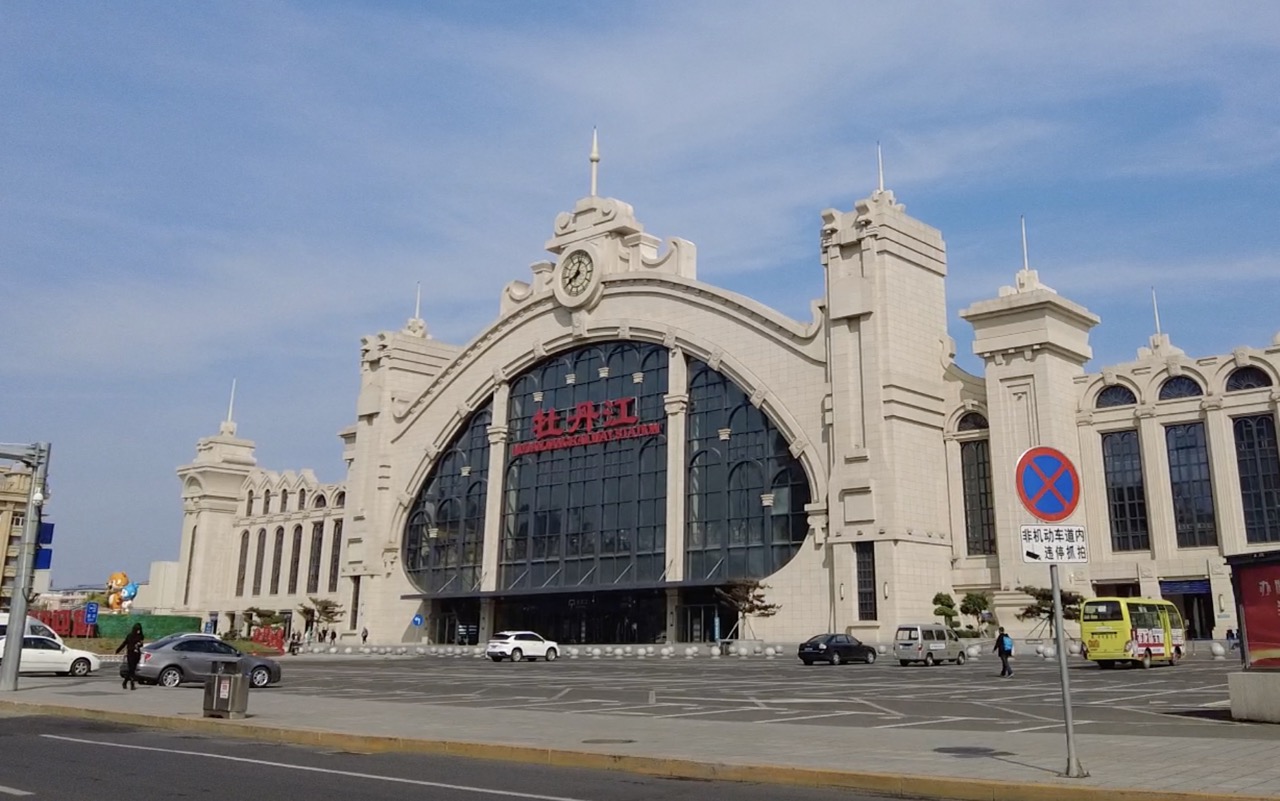Construction city – rooftops in Mudanjiang
Directed & Produced by Liu Xiaoyi
Before covid, the border city Mudanjiang relied on its convenient geographical location, to vigorously develop border trade with Russia, and became an important port for China’s imports and exports to Russia. During the most prosperous period, businessmen from Russia could often be seen visiting Mudanjiang for purchasing and trading. In Suifenhe, a town under the jurisdiction of Mudanjiang, signs written in Russian words can be found everywhere, and even direct transactions in rubles are accepted here. Because of the flourishing trade and foreign exchange, Russian elements can be found in many places in Mudanjiang: road signs and logos in Russian, stores selling Russian goods, a shopping street called “Russian-Chinese style streets”, and so on. However, after the breakout of epidemic, the cross-border policy in China and Russia was extremely tightened, and the 21-day quarantine of entry and exit basically froze all cross-border trade. It is hard to see Russian businessmen on the streets of Mudanjiang anymore, and even a Russian restaurant has lost all its Russian chefs and waiters. However, the city’s constructions have left their Russian mark: the various spires. These spires are found on the rooftops of train stations, hotels, and residential areas, preserving evidence of the Russian cultural influence on the city after the epidemic. In this short video, I filmed several of the typical Russian rooftop buildings in the urban area of Mudanjiang, in the likely form of a documentary, showing examples of the city’s architectural style being influenced by the culture of the neighboring country.
After a month-long closure of the neighborhood due to epidemic control, I was finally able to get out of the residential area and hang out on the street. As I drove across the river bridge, I noticed that a residential neighborhood across the river had distinctive spiky rooftops, much like the Russian style of architecture. After starting to notice other rooftops in the city, I was surprised to find that many of the new residential neighborhoods also had similar spires. Wood (2001) suggested that the culture of a boarder city can be easily influenced by the neighboring country, shown on the cuisine, artworks, accents, and music. The building, as a surface of a city, will also be affected by the foreign culture. To conduct the research on how Russian culture influences the construction in Mudanjiang, I visited the Mudanjiang Municipal Library, and conducted the field trips throughout the city, to collect the evidence on the Russian Style rooftops. To make comparison, I also did some literature review on how border cities in other countries are influence in architectural styles, for example in Mexico border cities.
After checking the historical materials and photos in the local library, I found that though the Russians did build some buildings in Mudanjiang in the early 20th century, they were limited to churches and train stations, and most of the construction was more infrastructure, such as the Middle East Railway and roads.


Interestingly, in the 1930s and 1940s, when Northeast China was invaded by Japan, the Japanese instead built more houses and buildings than the Russians. However, these Japanese buildings have disappeared now, but instead many Russian architecture, despite being demolished, have “remained” in the new buildings when they were rebuilt. For example, the Mudanjiang Railway Station, which was rebuilt in 1991, is a typical Russian-style station building. From this we can infer that the Russian elements in almost all buildings built today were not brought by Russian architects, but are the product of the Russian influence on the local architectural culture.
In the film, I shot several typical Russian-style buildings, focusing especially on their roofs. Originally, in my storyboard I chose to use a drone to shoot from an overhead perspective, but unfortunately, due to the short distance of the airport to the city, the entire city falls within a no-fly zone and my drone was unable to take off. So as an alternative, I had to choose to show the rooftops by shooting from the ground up or visiting nearby tall buildings. I tried to keep moving during the shoot to achieve a surrounded tracking shot, using the rooftops as the center of the image, and showing it from multiple angles, and them zoom in and out to show its details. While presenting the images I shot like a documentary, I chose to include a soundtrack of pure music played by an accordion – a typical Russian instrument,to help highlight the Russian style.
In my field filming, I found that more Russian-style roofs were found in the construction of hotels rather than residential areas. This is also in line with what Han Weiguang mentioned in his 2006 study: The nature of foreign trade cities determines that commercial culture must be reflected in the architecture, and commercial buildings such as hotels and shopping malls are more susceptible to cultural influences and urban landmarks.

But like other border cities, these elements of architectural culture share a common problem: too superficial,many buildings are only architectural symbols, and the buildings themselves are not artistic. These spires exist only as decoration and do not consist with the original style of the building, this needs to be studied and progressed when doing construction in these border cities.
Reference
Music: Valentin Movtosky: Tema de Borsalino_El Acordeón de ángel
Arreola, D. D. (1993). The Mexican border cities: Landscape anatomy and place personality. University of Arizona Press.
McAdams, M. A. (2004). The urban structure of El Centro in border cities: a case study of Reynosa, Tamaulipas, México. Retrieved from academia. edu: https://www. academia. edu/1278326/The_urban_structure_of_el_centro_in_border_cities_A_case_study_of_Reynosa_Tamaulipas_M% C3% A9xico.
Wood, Andrew G. (2001). Border Cities and Culture. Journal of the Southwest, 43(4), 461.
黨思釗.(2013).黑龍江省邊境城鎮景觀個性化設計研究(碩士學位論文,東北林業大學).https://kns.cnki.net/KCMS/detail/detail.aspx?dbname=CMFD201401&filename=1013371029.nh
韓偉光. (2006).滿洲裡市建築風貌與城市特色研究. Journal of Inner Mong olia University for Nationalities, 12 (3),115-117.
高艳. (2014). 牡丹江街道的历史. 黑龙江档案, (6), 153-154.
牡丹江市志編審委員會. (1993). 牡丹江市志. 哈爾濱: 黑龍江人民出版社.
张波. (2020). 俄式建筑对哈尔滨城市文化的影响研究. 哈尔滨学院学报, 41(1), 120-123.
By Liu Xiaoyi, 3035637292
This is definitely a special one out of all the posts that I’ve read. From your video and the essay, I get to know this city and the type of architectural structure that you’ve mentioned. Before that, I have only heard of Mudanjiang, but never know that it has such a close relationship with Russia. Your background info is really helpful for people like me to understand, and the background music is really suitable. However, I wondered if you could maybe focus more on the explanation of the connection between the construction city and rooftops in Mudanjiang.
This video serves as a short documentary and a glance at this city of alienation. As a border city, the architecture style visualizes a cultural hybrid, presenting an impressive and distinguished urban construction. Merchants and travellers disappear with cultural segmentation while churches and spires reveal good-old-time prosperity.
An interesting and informative video. Through observing the Russian style rooftops, the video shows how Russian culture deviates from Chinese one, as well as how they magically integrated as one in the city Mudanjiang. I also love the background music in this video! It’s romantic and graceful.
Thoughtful and in-depth research on a border city. You did not only document the visible hybridity of the city of Mudanjiang but also backed your observation with sufficient research and sounding analysis. I wonder why you named your video Construction City instead of Hybrid City? Apart from the Russian influences, what are some Chinese impacts on the architecture in Mudanjiang?